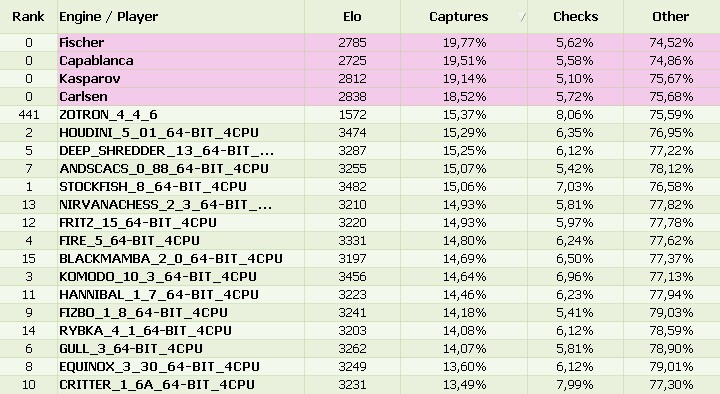im posting this from my blog: http://chessratios.altervista.org/
Surprisingly engines like Stockfish and Houdini (the top 2!), Are not very close in this table ordered by Captures.
Carlsen is 1 point under the other humans.
What do you think about this?
Edit:
The Following data analysis of chess games where made by me, the Engines games where extracted from de CCRL page in the category of “40 moves in 4 minutes” , also known as “404”.
The analysis was made game by game, and move by move… so the information, I think, is very precise.
All the analyzes and indicators presented here do not mean that one engine or person is better than another, they are only characteristics of their personality.
Captures: This are amount of captures that the engine or player made in proportion to the other moves.
Checks: This are amount of checks that the engine or player made in proportion to the other moves.
Other: Represents all the other moves that are not Captures or Checks.
Rank: The Rank column is the rank in CCRL of the engine at the moment when the data was downloaded.
All calculations are averaged with the number of games of each engine/player.
I add 4 human players to see the difference against the Engines analysis of these factors. And also added a ‘middle strength’ engine name Zotron (Ranked 441), also for the same cause, to see how these factors behave in different Engines.

